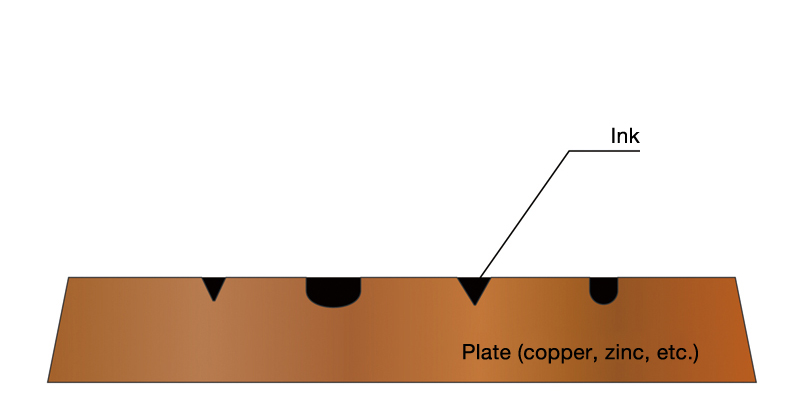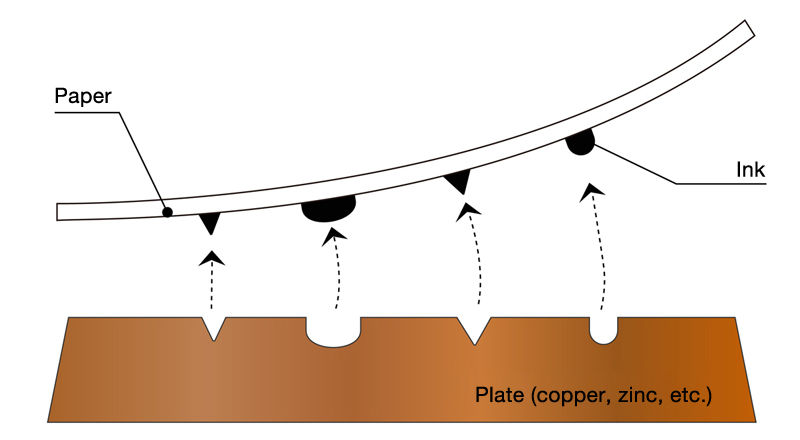Intaglio
凹版
ōhan
CATEGORIES
Intaglio is a printing format in which recesses in a printing plate hold the image to be printed. A printmaker fills the recesses made on the plate with ink and applies pressure using a press to make prints. Printmakers use etching or direct engraving techniques to create recesses in copperplates, which is one form of intaglio.
The four kinds of printmaking are relief, intaglio, planographic, and stencil. As its name implies in Italian, intaglio involves a physical process of engraving or etching to form recesses in the plate. The printmaker fills these recesses with ink and applies pressure using a press to transfer the ink from the plate to paper. The history of intaglio is believed to trace back to 15th-century Italy, where metalsmiths began printing records of engraved designs on metal fittings. Today, in addition to copperplate printing, intaglio is used in industrial applications, including the printing of bank notes (raised print), some commemorative stamps, and stock certificates, and is also used in photogravure printing, as well.
There are two plate production methods in copperplate printing. One is the direct technique (direct engraving), and the other is the indirect technique (etching). Printmakers use the direct intaglio technique to produce recesses in plates by engraving them directly. Examples of this technique include engraving, which employs a burin, and drypoint, which employs an engraving needle. The indirect intaglio technique of plate production entails first applying a coat of anti-corrosive solvent (ground or black varnish) to areas of the plate that will not transfer ink and then scraping an image in the anti-corrosive film to expose the metal surface of the plate. Next, the printmaker immerses the surface in a corrosive liquid such as ferric chloride or nitric acid, which etches the exposed metal surface to form recesses in the plate. Techniques such as etching and aquatint fall into the category of indirect intaglio. Industrial gravure printing uses copperplate cylindrical rollers that are created by photoengraving, etching, or laser engraving processes. A machine dips the plates in ink to fill its recesses, then wipes away ink that is coating the non-recessed areas of the plate. Then the machine applies pressure to the plate and paper, creating a print. Gravure printing is widely used for printing photographs and commercial packaging.
 A plate filled with ink
A plate filled with ink Transferred ink
Transferred ink
